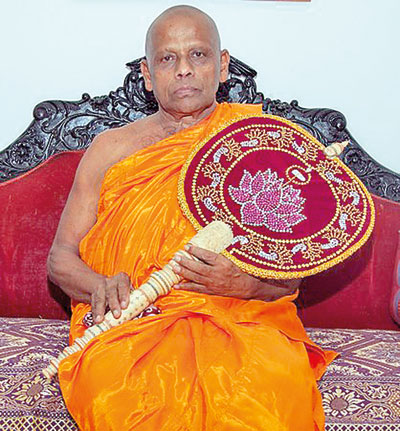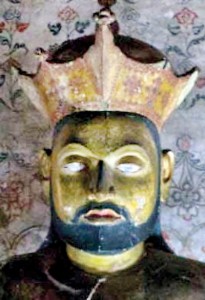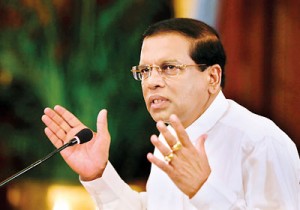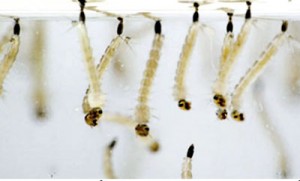Columns
Govt in quandary as Mahanayakes demand Presidency must stay put
It was the Venerable Sobitha Thera’s battle cry for real change; and the joint opposition candidate Sirisena’s spring board to power to gain the presidency and then turn it into a eunuch to serve the needs of a parliamentary harem.
But the fondest hope of the noble monk to see Sirisena birth a new constitution that will do away with the executive presidential system in the country and Sirisena’s promise in his manifesto which was released on December 19, 2014 at the Viharamahadevi Park “to introduce a constitutional structure with an Executive that is allied to Parliament through the cabinet” suddenly seem to be at risk of being jettisoned in mid flight by a most powerful sector in Lanka’s body politic: Namely, the Buddhist monks.

ASGIRIYA CHAPTER Mahanayake Most Ven. Warakagoda Sri Gnanaratana: Sets the wheel of opposition in motion
Sirisena had gone to extraordinary lengths to spell out the how and explain the why. Why the nation needed a new chic garment to swing with the fashions of the times and how he would see it tailored according to the public’s specifications and deliver it bespoke to the nation’s wardrobe; and how he would marshal his forces from all sides of the political divide to keep his promise to the nation.
He had placed his hands on his political testament, his election manifesto, and sworn to usher in a new constitution that would be more in keeping with the changing times. And he had promised to do so within hundred days of assuming office as President.
Two and a half years — nearly a thousand days — have now passed but the public cannot even sniff a whiff of smoke in the air wafting from the cabinet galley. Though the government says it is still being sautéed and the Prime Minster Ranil assures all it will soon be served on the table for public delectation, a section of the luncheon guests have, it seems, begun to wonder whether Lanka’s bacon will drop from the frying pan into the fire and whether the chefs will end up getting their fingers burnt.
This week a major obstacle arose to setback his hopes. In legal terms it could even be considered as a “Force Majeure”, an Act of God to frustrate Sirisena’s covenant with his people; for which act he cannot be held liable. Though this ‘ great force” did not come like a thunderbolt from the heavens but only rumbled from the hills, it still contained the potency to nullify his aims and reduce to naught all attempts to deliver a new constitution to a people who had long clamoured for one – perhaps in the mistaken belief that a new constitution, like a new broom, will serve to sweep the ground clean and rid the corners of the cobwebs and will be the panacea for the nation’s terminal illness, even though it may well turn out to be nothing more than a placebo.
It was the Asgiriya Chapter of the Siam Nikaya that first started the wheel rolling. Last Saturday, the Mahanayake of the Chapter Most Ven. Warakagoda Sri Gnanaratana rejected the proposed new constitution out of hand. He and other senior monks told Buddha Sasana Task Force representatives who had paid a visit to the Asgiriya temple that “one of the objectives of the proposed new constitution was to make way for separatism and remove the foremost place given to Buddhism in the existing Constitution”.
 But what on earth gave them that idea? Did they have a sneak peak at the proposed constitution in its final draft form or did they base their decision to reject it in toto after imbibing the juice that liberally flows from the Joint Opposition grapevine?
But what on earth gave them that idea? Did they have a sneak peak at the proposed constitution in its final draft form or did they base their decision to reject it in toto after imbibing the juice that liberally flows from the Joint Opposition grapevine?
Surprisingly on Tuesday the rest of the Nikayas’ accepted the Asgiriya Chapters alms poured into their bowls without question, and nodded their head in agreement without murmur. Unanimously they held there was no need to bring in a new Constitution or an Amendment to the Constitution.
Two questions arise here. What made these monks, acting in unison, condemn to the sunset the prospect of a new constitution for Sri Lanka rising from the horizon? Especially when they, along with the rest of the country, haven’t the foggiest as to what it may contain? Had they forgotten the Kalama Sutta where the Buddha exhorted:
- Do not accept anything on mere hearsay.
- Do not accept anything by mere tradition.
- Do not accept anything on account of rumours.
- Do not accept anything just because it accords with your scriptures.
- Do not accept anything by suppositions.
- Do not accept anything by mere inference.
- Do not accept anything by merely considering the appearance.
- Do not accept anything merely because it agrees with your preconceived notion. Do not accept anything merely because it seems acceptable.
- And later in the Jnanasara-samuccaya proceeded to say”
- “As the wise test gold by burning, cutting and rubbing it on a piece of touchstone, so are you to accept my words only after examining them and not out of regard for me”
After the Buddha had given both man and monk not only the liberty but also licence to question even what he expounded, nay, tasked them both with a duty to examine even his own Dhamma before accepting it, odd isn’t it that one should rush to reject a document one had not even set eyes on?
As cabinet spokesman Minister Rajitha Senaratne said on Wednesday, “6.2 million people had endorsed Maithripala Sirisena’s 2015 presidential election manifesto, which had clearly stated that a brand new Constitution would be introduced and another mandate had been given at the subsequent general election.”
Senaratne said it should not be forgotten that a large number of Buddhist monks had also voted for change on Jan. 8, 2015. “I cannot understand how those who protested on the streets demanding that the executive presidency be abolished can behave in this manner today. Their political agenda is very clear for everyone to see.” Senaratne stressed that the people’s verdict could not be disregarded, that the proposed changes were aimed at uniting all communities and developing the country and not dividing.
He further said: “This is what has happened since 1958. When Sinhala was made the State language, Tamil extremists said the Tamil language will be finished. But from what can be seen it was not so. Whether we need a new Constitution or not will be decided by the 225 members in parliament and the people of this country. The final Constitutional draft is still to be finalised and the contents will be known only after that work was completed.”
And as Prime Minister Wickremesinghe later confirmed to the House on Thursday, he said he had inquired from the Steering Committee whether any draft had been put out and had been informed that “no draft has been prepared”.
The second question is what made them do a complete U turn and condemn off hand a constitution still in its unknown foetus stage and demand it be aborted? What made them make a complete turnabout, a volte-face, on the stance they firmly held not so long ago: that the present constitution was the bane of Lanka’s woes and should be shredded, burnt and its ashes scattered in the sea?
What indeed, is it, that makes them, now hail from the Sri Dalada Pattirippuva that the much decried 1978 Constitution of President J. R. Jayewardene has been, presently is and will for all time ever be the Mother of all Constitutions that exists in the world, so much so that even an amendment to it must not be effected, now and for all time, lest it outrages its pristine purity? What makes them hold sacred and inviolate JR’s creation now when not so long ago they reviled it as Jayewardene’s monster? What has seduced them to embrace it now with open arms and insist it must stay without a word altered?
Perhaps in their collective wisdom they have decided to pander to the known devil’s vices than give their blessings to the virtues of an unknown angel. Buddhism knows no Popes and neither is Kandy the Vatican. Nor are all the three Buddhist Nikayas, namely the Malwatte, Asgiriya forming the Siam Nikaya, Amarapura and Rammannya Nikayas, the Holy See. Nevertheless the political power they wield to make or break governments in the name of safeguarding Buddhism and the Sinhala race which had played host to it, is undeniable and cannot be understated. They have within their ambit to throw the religious watapatha into the political works of a nation and create chaos in the land.
 KING KIRTHI SRI RAJASINGHE: Tamil King of Lanka during whose reign the Siam Nikaya was introduced to Lanka from Thailand in 1753 Brief history of Nikayas’ origins But ever since the fall of Lanka’s 1,300 year old capital Anuradhapura, the Buddha Sasana in Lanka had faced near extinction. It almost disappeared in late 12th century when the Sinhala Kingdom went mobile and had to move from region to region to flee from invading Chola forces. From the 13th century onwards even the Buddhist Order of Monks became extinct not once but thrice. The Order of Monks was re-established in the reigns of Vimala Dharma Suriya I (1591–1604) and Vimala Dharma Suriya II (1687–1707) as well. But these resurrections were short lived and soon, once more, the Sasana ceased to exist in Lanka. It was not until the 18th century that it was once again established on more solid ground. The Ven. Weliwita Saranankara (1698–1778) took the initiative to reestablish the Sasana in Lanka and invited a Thai monk named Upali who visited Kandy in 1753 during the reign of King Kirti Sri Rajasinghe (1747–1782) was invited by the Tamil king to do the needful and reestablish the Order. The venerable monk performed upasampada, higher ordination to a group of Kandyan monks. Thus was the Siam Nikaya born on the 19th of July 1753 , named after Siam, now Thailand, having a mere 264 year history to date compared to the over thousand year history that ancient Lanka’s Bhikku Order had enjoyed till it ceased to exist. Given the Govigama caste exclusivity held by the Siam Nikaya which refused to ordain monks of lower castes, a revolt broke resulting in the establishment of two other nikaya’s the Amarapura Nikaya in 1803 at Velitota, Balapitiya and the Ramannya Nikaya in 1864 by Ambagahawatte Saranankara, when he returned after being ordained in Burma. It is unfortunate to note that, contrary to the Buddha’s teachings, the Buddha Sasana in Lanka still remains divided along caste line.
| |
| Maithripala Sirisena never vowed to abolish the Executive PresidencyMaithripala Sirisena may have promised the sun, moon and stars to the Great Sri Lankan public. But, contrary to popular misconception, he never promised to abolish the executive presidency.TRUE, that with the nation’s aspirations coiled in his breast, Maithripala Sirisena placed his hand upon his manifesto and vowed to bring in a new constitution. But he never promised a rose garden where the perennial thorn of an executive presidency would cease to exist there. TRUE, he had stated: “We were unable to constitutionally change the Executive Presidential system that has been in force since 1978 though we promised the people and the country to do so from 1994 up to date. Our inability to achieve that objective was a great failure on our part. It cannot be delayed any longer. “ TRUE, he had spelt out in detail the obstacles he might face in ‘abolishing the Executive Presidential System with Unlimited Powers‘and the manner in which he will overcome them.  PRESIDENT: Never promised a rose garden without the presidential thorn of contention TRUE he had said: “The President needs the assistance of Parliament to change the post of Executive President. That is because it is Parliament which has the power to amend the Constitution. Yet the Parliament was unable to effect this change for the last twenty years. It is the President as leader of the main party who should provide the leadership to pass the required Constitutional Amendment with a two-thirds majority. For that the President should take the initiative to reach an accord among the main political parties. It is to fulfil this task that I decided to come forward as the common candidate of all the people at this Presidential election. “ TRUE, He had even revealed the plan he envisaged to obtain the two third majority in Parliament – and do so within hundred days of being in office – when he stated” “I can obtain the support of the Members of Parliament of the Sri Lanka Freedom Party that has the majority in Parliament. The United National Party has signed an agreement with me to effect this amendment. The Janatha Vimukthi Peramuna has since 1994 agreed with our Party to do this. The Jathika Hela Urumaya has signed an agreement with me to support this measure. TRUE, he had promised to deliver a tailor-made constitution that would be cut to fit the public’s shape and size, and TRUE, too, that he had sworn to sign, seal and deliver lock, stock and barrel within hundred days of assuming presidential office, a whole brave, brand new constitution that would be more apt to face the challenges of the 21st century, when he had declared “Therefore I will have discussions with other parties and pass this amendment without fail within a hundred days. In order to change the Executive Presidential System I am taking as background material agreements for abolishing the Executive Presidential system reached by the Movement for a Just Society headed by Venerable Maduluwawe Sobitha Thera as well as the proposals contained in the Draft 19th Amendment compiled by the Pivithuru Hetak Jathika Sabhava headed by Ven Atureliye Ratana Thera, which proposed a Constitutional alliance of the President and the Prime Minister. I will also consider the changes proposed to these proposals by the United National Party.” But FALSE that he had ever stated in his political Bible that he will abolish the Executive presidency. In the final clincher paragraph in his manifesto in the chapter in which he outlines his “My Way” forward, he had merely stated that: “The new constitutional structure would essentially be an Executive allied with the Parliament with the Cabinet instead of the present autocratic system Presidential System of Government. Under it the president will be equal with all other citizens of the law. I guarantee that in the proposed constitutional amendment I will not touch any Constitutional Article that could be changed only with the approval at a Referendum. “ And to underscore, underline, to highlight in blue or yellow, his intention not to abolish the Executive Presidency, he had for good measure added in the above paragraph his declaration “I guarantee that in the proposed constitutional amendment I will not touch any Constitutional Article that could be changed only with the approval at a Referendum.“ That should have sent the alarms bells ringing; but in those heady days of toppling the seemingly invincible Rajapaksa regime, perhaps it slipped the minds of many to read between the lines and to discern that what Maithripala was offering was a reformed presidency, not its total abolishment. Like the Mahawamsa has been woven around the heroics of King Dutugamunu, the JR constitution of 1978 has not only been weaved around the powers of the executive presidency but wickered to fortify his stranglehold on the other two estates of the realm. To have a constitution without the role of an executive presidency would have been akin to staging Hamlet without the Prince. A referendum, and not a mere two third majority in Parliament, would have to be called for to give legitimacy for such a radical change, a metamorphosis of the constitution. All that Sirisena had promised was to cull some of the executive powers of the presidency, which he did to some extent in the 19th Amendment. Whether it went far enough or not is a matter of subjective debate. But his promise was not to make the presidential dinosaur extinct but only to ensure its survival by making it adapt to the demands of the changing environment. Knock, knock: Who’s there? Another mos!  LARVA OF A KIND: MRI unveils secret weapon released to the environment Dr. Sagarika Samarasinghe, Director of the Entomology and Parasitology Unit of the Medical Research Institute (MRI) revealed: “The group headed by me started establishing the Toxorhynchites splendens colony in 2016. This is a tough research and therefore we can’t do it overnight. We have released these larvae to the environment several times without publicising it, and this is the end result of the hard work and research conducted at the MRI”. It’s good to know that scientists have been busy working on ways and means to combat the deadly dengue menace and have thought fit to employ the services of a cannibal mosquito which has been used in many countries as a weapon to fight dengue. But whatever the degree of Toxorhynchites splendens’ pecker may be, neither do flies suck human blood but the diseases they carry are far too many to mention. And what disease the ‘elephant mosquito’ will carry in its arsenal, especially one given to feeding on its own ilk – and that, too, from a young larva stage – cannot be predicted. The consequences of deploying one parasite to eradicate another are well documented to give even scientists pause. That not even the scientists, dabbling in their mystery works, have the right to play God and breed colonies of possibly disease carrying insects in their shrouded laboratories and secretly unleash it to a habitat colonized by humans? That such an outlandish decision must first be subject to discussion and debate and its good and bad first weighed by experts other than those at the MRI before it is introduced or promoted in the environment? Was even the President, who is also the Minister of the Environment, informed before this decision was taken? And for the people to be spared of the nightmare when there is a double midnight knock on the door only to be told: ‘Another mosquito. An elephant sized one, carrying a Pandora‘s Box of diseases sans hope.” |


Leave a Reply
Post Comment